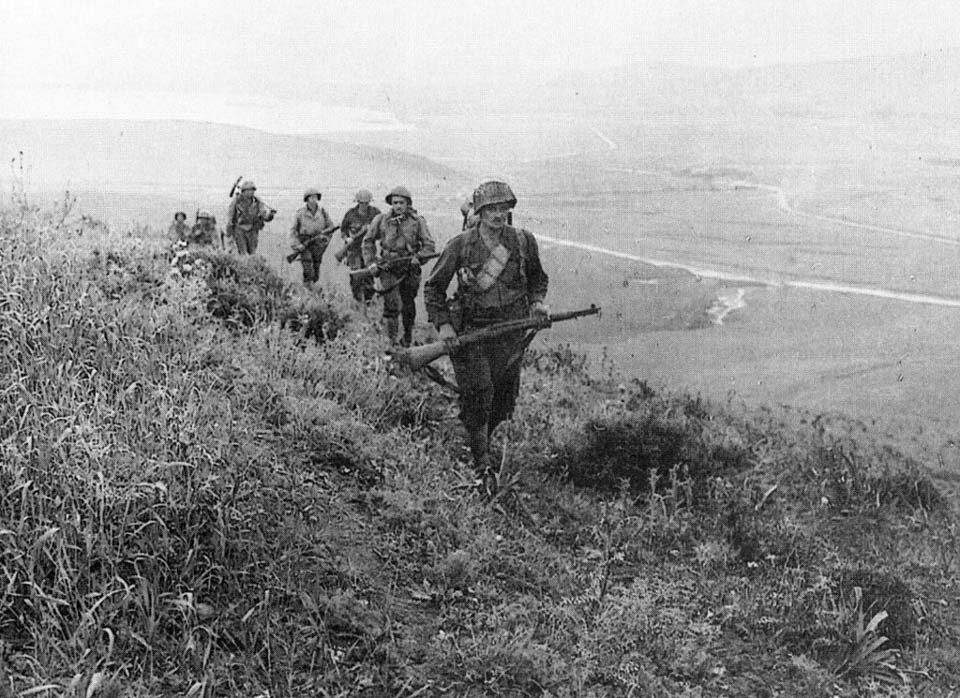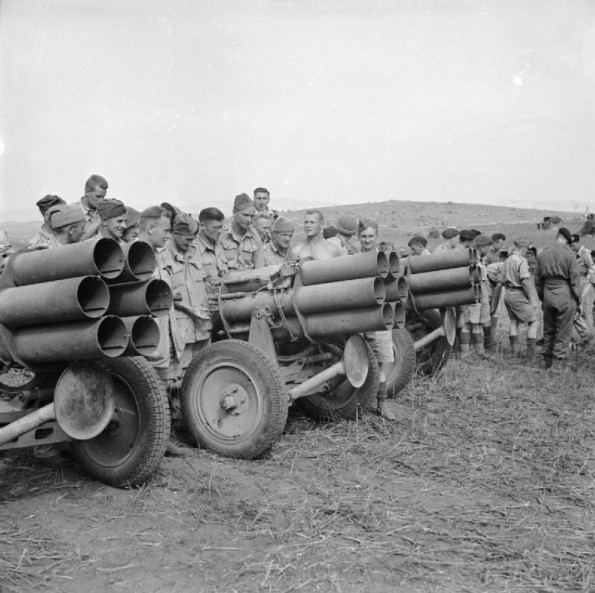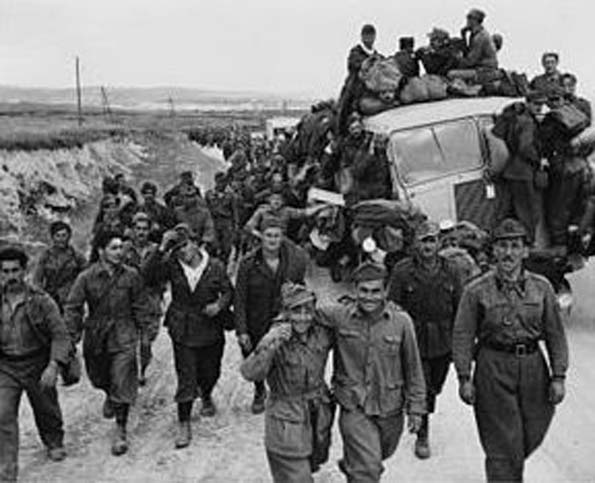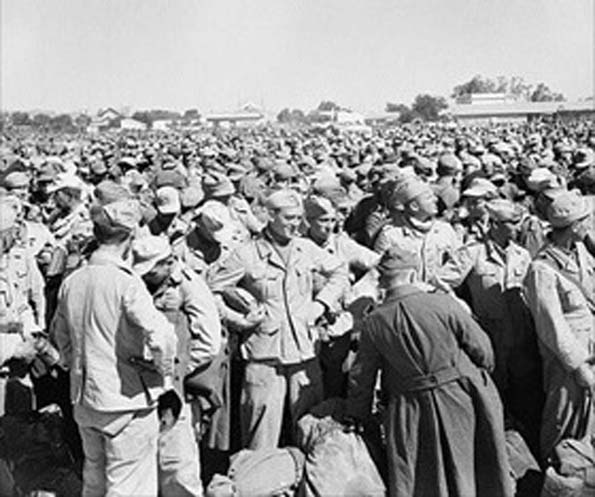Air Operations, East Indies
V Bomber Command B-25s attack Penfoei, Timor.
[Air Operations, Europe
- In a repeat of the previous day's operations, Russian bombers again raid German troop concentrations and railways in Novgorod and the Bryansk-Orel areas and the Ukraine.
- There is a fighter-bomber raid on Great Yarmouth.
Daylight Ops:
- 6 Mitchells are sent to bomb a railway target at Boulogne, but they are recalled.
Air Operations, Mediterranean
IX Fighter Command P-40 fighter-bombers attacking Axis shipping at sea in the Gulf of Tunis sink a destroyer loaded with evacuees and claim severe damage on 3 other destroyers.
[Air Operations, New Guinea
- 43rd Heavy Bomb Group B-17s and 90th Heavy Bomb Group B-24s attack Madang.
- 3rd Light Bomb Group A-20s attack Japanese Army ground forces around Greenís Hill.
Air Operations, Tunisia
- NAAF P-40s attack small ships and port facilities at Tunis.
- NATBF A-20s, B-25s, and fighter-bombers attack Axis road traffic around Tunis and the Tunis/El Aouina Airdrome.
- IX Bomber Command B-25s attack Keliba.
Baltic Sea
Russian submarines supported by aircraft and minesweepers, make unsuccessful attempts to break through the German-Finnish blockade in the Baltic.
[Battle of the Atlantic
- Liberator 'P' of No 86 Squadron RAF is flying support of convoy HX-236 when she sights a U-boat. Four depth charges are expertly placed, two on either side of the conning tower sinking U-109.
U-109
Class Type IXB CO Oberleutnant zur See Joachim Schramm Location Atlantic, S of Ireland Cause Air attack Casualties 52 Survivors None U-447
Class Type VIIC CO Oberleutnant zur See Friedrich-Wilhelm Bothe Location Atlantic, SW of Cape St Vincent Cause Air attack Casualties 48 Survivors None - Hudson 'X' of No 233 Squadron sights U-447 on the surface and attacks with four depth charges. The U-boat appears to be blown clear of the water, but is then attacked by Hudson 'I' of the same squadron. Both aircraft carry out a series of maching-gun passes over the submarine which is seen sinking by the stern.
CBI
BURMAThe 26th Indian Div is forced to retire to the northwest from Buthiduang, which is taken by the Japanese.
[Canada, Home Front
The House of Commons vote to contribute an additional $1 billion toward the war effort.
[Mediterranean
British destroyers of Force K and Force Q blockade Cape Bon to prevent an Axis 'Dunkirk'-style evacuation from Tunisia.
[North Africa
TUNISIAThe Allied forces burst forward all along the line. Tunis and Bizerta are both captured at about the same time in the afternoon by the British at 3:40p.m. and the Americans at 4:15p.m. respectively. French forces with the 1st Army enter Pont du Fahs.
|
|
In the US II Corps area, the 9th Div finishes clearing Djebel Cheniti and the adjacent hills to the north, then reconnoiters toward Bizerte as enemy resistance on the northern front collapses. Reconnaissance elements of the 894th Tank Destroyer Battalion, followed closely by elements of the 751st Tank Battalion, enter Bizerte, where they find few enemy but many mines and booby traps. Ferryville falls to the 1st Armored Div. Elements of the 1st Armored Div driving eastward to cut the Tunis-Bizerte road reach Oued ben Hassine and take the bridge intact. The 34th Div drives toward the Chouïgui defile but is stopped a little short of it by enemy forces on Hill 242. The enemy abandons the pass during the night.
In the British 1st Army's IX Corps area, the 7th and 6th Armored Divs continue northeastward from Massicault, overrunning St Cyprien and Le Bardo. The Derbyshire Yeomanry and the 11th Hussars enter Tunis in the afternoon. The French XIX Corps occupies Pont-du-Fahs.
|
|
Pacific
- The US submarine Snook (SS-279) sinks the Japanese merchant cargo shop Tosei Maru (4363t) and No. 3 Shinsei Maru in the Yellow Sea.
- The US submarine Wahoo (SS-238) sinks the Japanese merchant passenger/cargo ship No. 5 Tamon Maru (5260t) off Benten Zaki, Honshu.
- The Vichy French steamship Gouverneur General Pasquir (1994t) is sunk by a mine off the coast of French Indochina.
Solomons
US forces lay mine barrages in the waters around New Georgia across the Blackett Strait in the Kula Gulf to isolate it from Japanese supplies. 3 destroyers are sunk by these mines on May 8.
[


